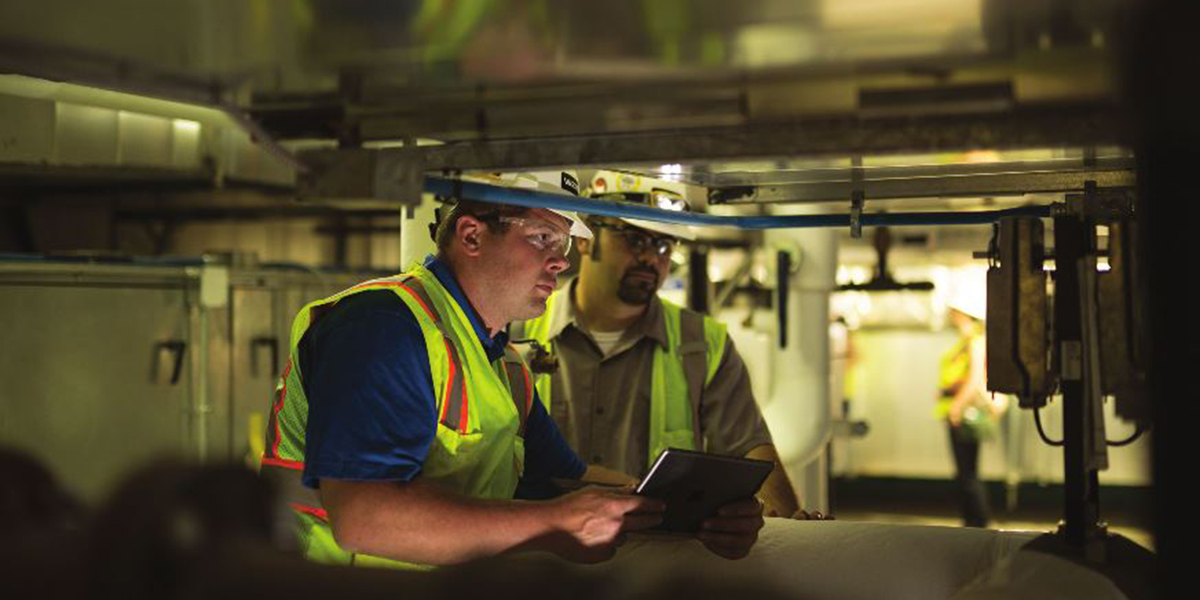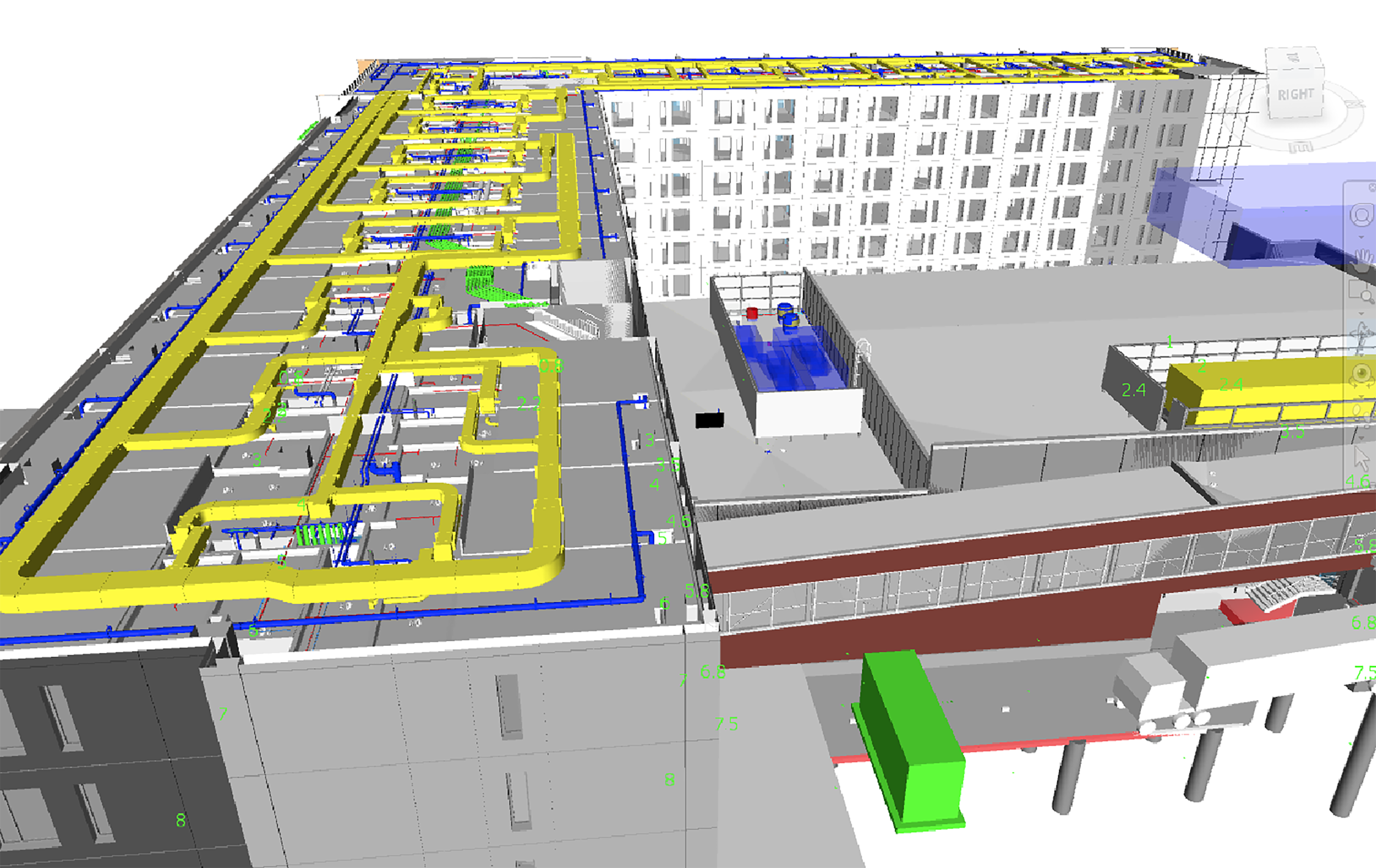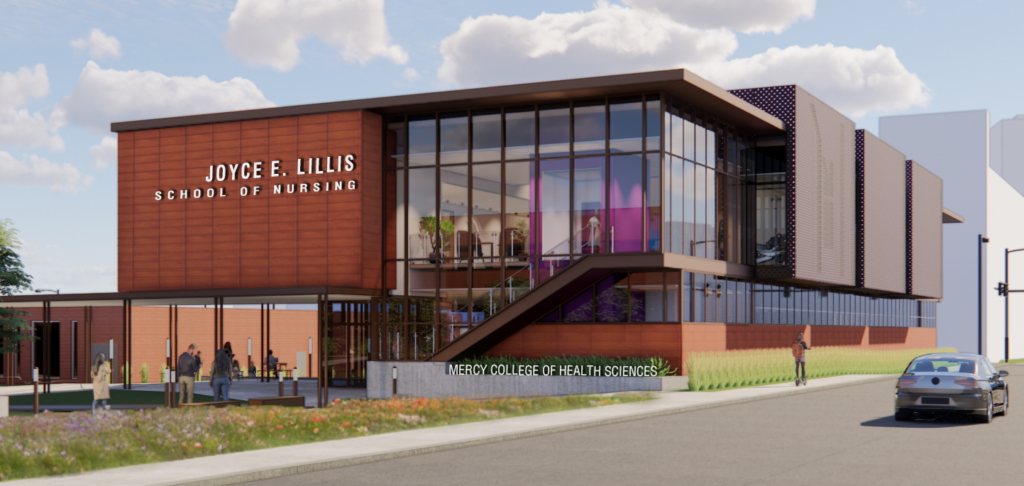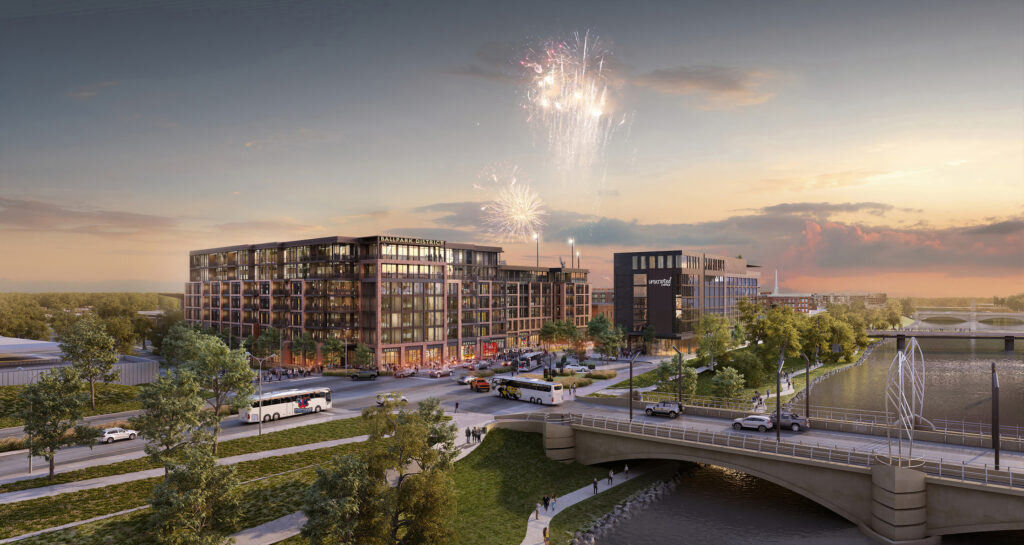Eliminate the guesswork in construction with virtual design

Business Record Staff Jul 26, 2017 | 11:00 am
3 min read time
684 wordsBusiness Insights Blog, ConstructionBY MIKE TOUSLEY, Executive Vice President & General Manager, The Weitz Company
In a place like downtown Des Moines, space is tight for new construction. This month, Dan Solem, Senior Project Manager, and Ben Bunge, Project Manager, join me again in a discussion about how virtual design can take the guesswork out of construction and save money and time on projects.
Why virtual design?
Tight construction sites make the use of technology, such as three-dimensional and virtual design, even more important. It leads to better planning and site logistics and eliminating guesswork.
This helps in cases where construction could take place on a site with a mix of soil types, or in areas that have surrounding buildings, or high automobile and foot traffic.
Ben Bunge explained how this related to the site preparation for the new Hilton Des Moines Downtown Hotel:
A building was demolished to make way for the new hotel. Once the building was gone, it left a 20-foot deep hole next to Fifth Street. The use of 3-D technology gave workers the ability to see the slope of the sandy conditions and determine how to better shore the area alongside the street. This ensured the area could support the weight of cranes and other heavy loads arriving onto the site, saving the existing skywalk and preventing its reconstruction as part of the project. The skywalk is connected to the Iowa Events Center and will reopen in 2018.
Bunge said virtual design of a project can show engineers and contractors where to place equipment, such as cranes, so they can access all areas of the worksite and can simulate hoisting of the crane and rigging designs before any actual activity takes place on the site. It allows visualization of traffic control, nearby pedestrians and workers and other buildings so construction can take those things into account beforehand to avoid negatively affecting others and reduce the risk of maneuvering mishaps.
“With 2-D drawings, people can’t always understand the depth and visualize what it looks like,” he said.
Start at the beginning
Dan Solem, who is working on The Fifth, a 32-story tower in downtown Des Moines that includes apartments and a hotel, said virtual design starts in the pre-construction stage:
It can be used to map out options for ecological constraints, whether to rebuild a foundation or keep it in place, how to shore areas if demolition takes place, how equipment and materials will enter and leave the job site, how a new building will connect to the existing downtown skywalk and much more.
“We’re using virtual design and construction to figure out how to make it more predictable for the design team and to come to an easier conclusion on how to make those connections,” Solem said.
Involve all parties
Solem pointed out that the visual aspects of 3-D design can help city officials, the public and other stakeholders better understand a project and the effects it’ll have during construction. This helps improve communication with all involved parties and builds support for the project.
Virtual design also eliminates waste by showing options for projects virtually. This leads to better planning and decision-making, rather than building part of a project and having to stop work and adjust multiple construction specialties. It also can ensure the project is built to the accurate size, dimensions and proportions.
“This is something we’ve learned over time,” Solem said.
Bunge said some project owners are still hesitant to use virtual design because they think it is more expensive, but this can be detrimental to the efficiencies and reliability of the project. The use of virtual design pays for itself in the efficiencies and reduced waste from the construction project. Most owners will see some sort of efficiency and can then put that money back into the building project.
Next time
Our next discussion will feature alternative project delivery methods, how they work, and how they’re changing the construction industry.
Contact us if you have questions or need more information about virtual design:
Dan Solem, Senior Project Manager
dan.solem@weitz.com
Ben Bunge, Project Manager
ben.bunge@weitz.com
 |
Mike Tousley View Bio |













